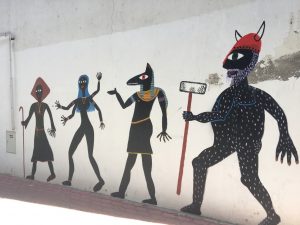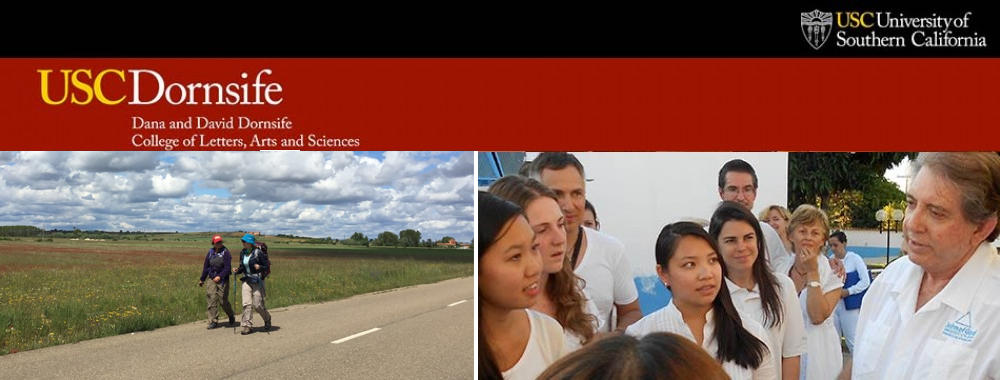 About five minutes after leaving Leon on my first day of pilgrimage, I can across a
About five minutes after leaving Leon on my first day of pilgrimage, I can across a
message spray-painted on the wall of an abandoned house: “El Camino real es
internal [The real Camino is internal].”
Seeing this prompted me to be on the lookout for other graffiti messages during the rest
of my Camino. Scrawled on road signs, painted on rocks and road markers, spray-painted
onto walls—they were everywhere.

“Past and future are fruits of your mind. “
Most of these were short, encouraging, and vaguely spiritual; intended to bolster
morale or give advice. (For example, “Let the wisdom of uncertainty guide you;” “Your
blisters will heal, but the friends you make will last a lifetime;” or simply “keep going!”
There were a few explicitly religious messages, which increased in frequently as I
approached Santiago. These included specific Bible verses, prayers to St. James, and
advice to “Pray and Chill.” Then there were the more humorous pieces: for example,
“Don’t write on the road signs!” written on a road sign. Finally, there was artwork: the
rarest category, which ranged from a smiley-face spray-painted onto a stop sign to
elaborate murals along the walls. In Sarria, there was a lengthy painting of shells,
silhouetted pilgrims, scenery from the route, and faces of historically-significant
individuals from Camino history. As Sarria is one of the most common starting points for
pilgrims, this piece served to welcome them, impart the history of the Camino, and give
them a sneak preview of the road that awaits them.
Another mural (spotted in a small town near Ambasmestas) consisted of several
stylized figures in a row, painted to look as if they were walking the Camino with us. The
group was led by a traditionally-dressed pilgrim, followed by major gods and goddesses
from other religions. This seemed to be a commentary on how the Camino attracts
pilgrims from all faiths and creeds, and has perhaps transcended its religious roots to
become something more.
The Camino is famous for its “community”—much has been said about the
friendliness and camaraderie that develops between pilgrims as they walk. But graffiti
goes beyond that, and forms a bond between people who have never met and probably
never will. Those who leave these messages behind leave more than words—they leave
advice, spirituality, and, most importantly, a community, that unites pilgrims not just with
the artist/authors, but with each other. The Camino graffiti doesn’t just offer encouragement and insight, but lets us walk up to another pilgrim and start a conversation just by asking
“Did you see that funny graffiti back there”?
